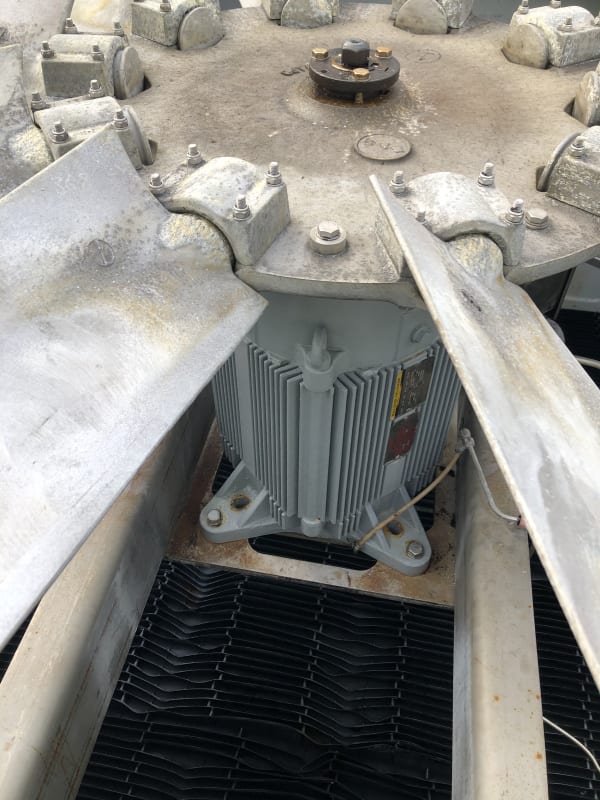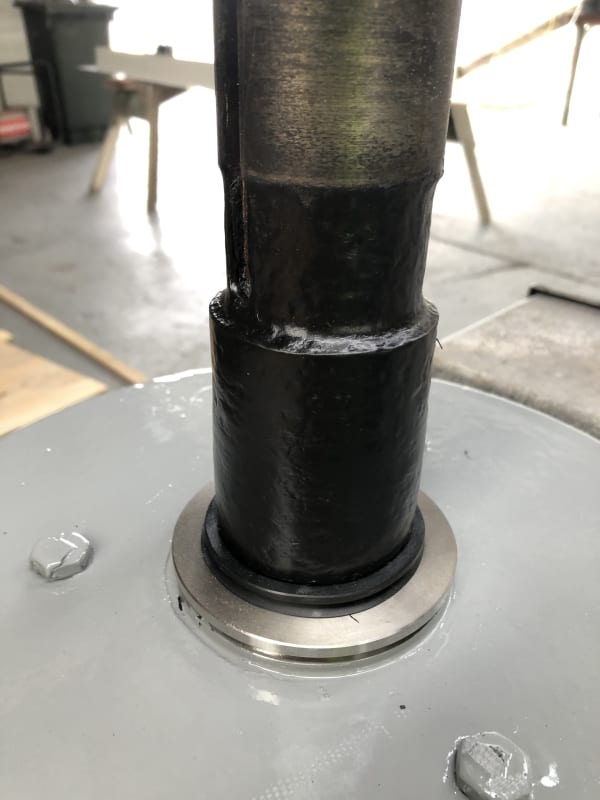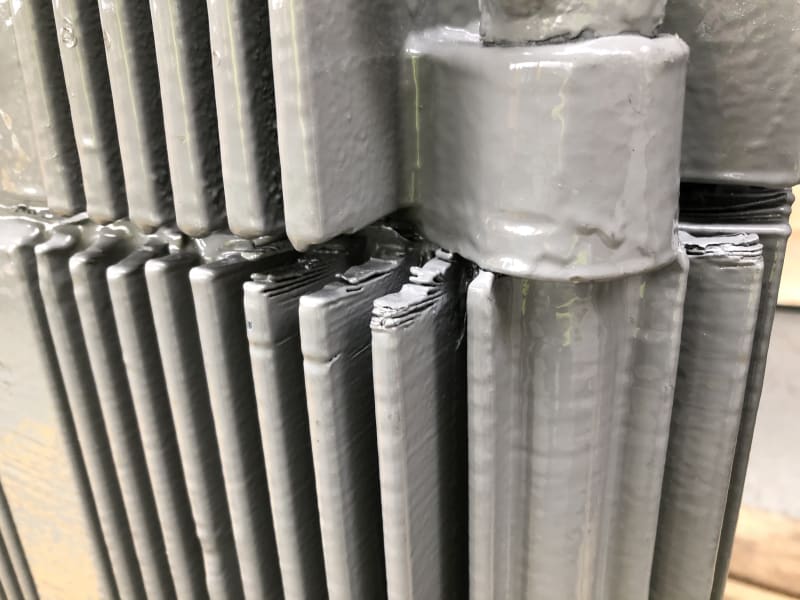gdn1984
Mechanical
- Jan 6, 2020
- 7
I have been asked to look at adding cathodic protection to some cooling tower motors. Approximately one year ago the cooling tower structure was replaced with stainless steel. The motors mount directly to the SS. Since then the corrosion of the motor housing and the bare part of the motor shaft has been rapid. I am making inquiries about whether appropriate corrosion inhibitor is being used - presumably this is the case. The motors are run via VSD, but aside from that I do not know details of the electrical installation.
The photos show a motor back from refurbishment. This motor is not more than three years old. Apparently a better paint system has been used for the refurbishment. The cooling fins on the housing have corroded to be "comb-like" - I am not familiar with this. The corrosion on the bare part of the shaft is visible - the keyed part of the shaft should be a straight shaft. Below the shoulder, the material loss will be the same as immediately above. A coating has been applied to try and protect it.
My thoughts are:
- galvanic corrosion between motor housing and SS structure could be reduced by attaching an anode to the motor housing
- in addition, the motor shaft has electrolytic corrosion due to a shaft voltage caused by the VSD.
- A review of the chemical dosing should be done to ensure the use of corrosion inhibitors is adequate
Am I on the right track? Thank you
Note: Two photos are of a freshly overhauled motor. One is of a motor recently installed following the same refurbishment process.



The photos show a motor back from refurbishment. This motor is not more than three years old. Apparently a better paint system has been used for the refurbishment. The cooling fins on the housing have corroded to be "comb-like" - I am not familiar with this. The corrosion on the bare part of the shaft is visible - the keyed part of the shaft should be a straight shaft. Below the shoulder, the material loss will be the same as immediately above. A coating has been applied to try and protect it.
My thoughts are:
- galvanic corrosion between motor housing and SS structure could be reduced by attaching an anode to the motor housing
- in addition, the motor shaft has electrolytic corrosion due to a shaft voltage caused by the VSD.
- A review of the chemical dosing should be done to ensure the use of corrosion inhibitors is adequate
Am I on the right track? Thank you
Note: Two photos are of a freshly overhauled motor. One is of a motor recently installed following the same refurbishment process.



